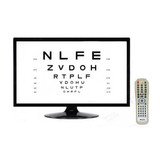- Mar 19, 2024
Updated: Apr 22, 2024
So, you've decided to open your new office, and now you're considering taking out a large equipment loan to purchase everything you need. The equipment rep has assured you that it won't be a problem - you'll be so busy, and the money will be rolling in! All you have to do is sign. But wait! Before you do that, let me share a cautionary tale from my own experience.
The Costly Mistake I Made in My First Private Practice
My first attempt at private practice was disastrous for many reasons, one of which was buying too much equipment. I listened to salespeople who assured me that my equipment was a good investment and would pay for itself in no time. The exhibit hall at Vision Expo became my shopping mall, and I thought with the best (most expensive) equipment, there was no way I could fail. But I did. Eventually, I was more than 90 days behind on my equipment payments and had to close my practice.
Learning from Failure: A Second Chance
Fast forward ten years, and I'm a lot smarter about my money. When I decided to try private practice again, I promised myself I would do better. With a little searching, I discovered that you can purchase new, high-quality equipment at a fraction of what big brands are asking.
My best advice for new business owners: Check out AliExpress. I know dealing with Chinese suppliers can be intimidating, but when buying from a reputable seller, you can get some really amazing deals.
A Reliable Supplier for Affordable Optometry Equipment
Below, I've compiled a list of inexpensive ophthalmic equipment from one of my favorite suppliers, Link Ophthalmic. I've ordered from Link for many years and have had good experiences with both the quality of their products and their customer service. The prices listed are current as of the time of this blog posting and include shipping.
Manual Phoropter - $793.24 This is a standard minus-cylinder phoropter. In my opinion, it works just as well as more expensive brands like Topcon or Reichert.
Lensometer - $382.55 This lensometer reliably measures sphere, cylinder, axis, add, and prism. It can also be used to mark lens blanks for edging.
19" LCD Chart with Remote - $419.36 This chart is high tech and looks amazing. Also available in 21". Compare to similar charts priced at over $1500.
Slit Lamp - $2,201.23 A solid option for a slit lamp. This base model works just as well as any slit lamp I've used before. You will need to add a tonometer like the one below.
Retinoscope and Ophthalmoscope - $545.09 A retinoscope is a must have, especially if you don't have an autorefractor. This streak retinoscope works just as well as other big name brands.
Binocular Indirect - $1473.84 This base model BIO works great and is comparable to other models priced at over $2500.
Slit Lamp Tonometer - $392.53 This tonometer attaches to your slit lamp. If given the option, choose a "R Type" tonometer over a "T Type". They both work well, but you'll find the "R Type" in most optometry offices.
3 Instrument Stand with Chair - $3500 Technically, you really don't need this fancy of a chair/stand unit, however, I think the price makes this a great buy, even for startups. Place your slit lamp on one table and add more equipment as your practice grows. Check out my blog post where I talk about the space saving features of this table.
Molo-1000 Patternless Lens Edger - $4500 I wouldn't say that a lens edger is 100% necessary for starting your own practice, but you may want to consider it if you have an optical. The outrageous price of lab fees make this a smart investment and can lower your cost of goods significantly.
Total equipment cost $9,707.84 ($14,207.84 with edger)!
As you can see, you can buy new equipment for your practice without breaking the bank. This list is just a sampling of all the great deals you can find. If you have any questions about finding a reputable supplier or ordering from overseas, please reach out to me and I'll be happy to help.
Some products may be subject to import taxes. These are additional fees you might pay (usually to the shipping company, such as FedEx.) Please contact the seller if you have questions about import fees. I may receive a commission from the seller for the products featured in this post. However, the opinions are my own are not influenced by any money I may receive. You, the buyer, will never be responsible for any commission fee.



















